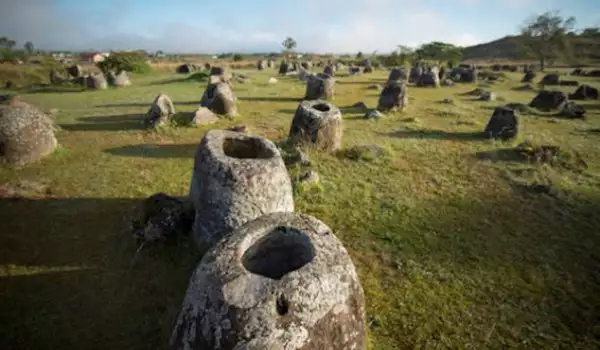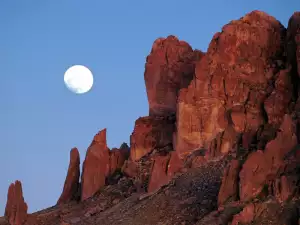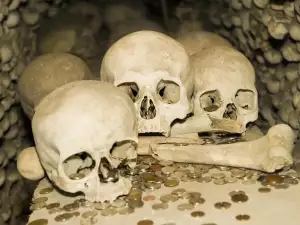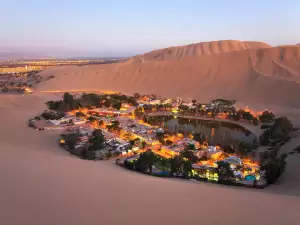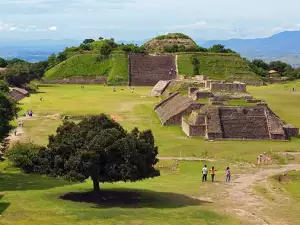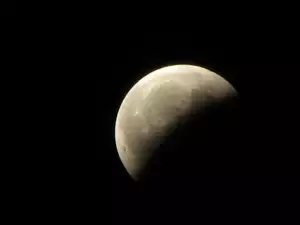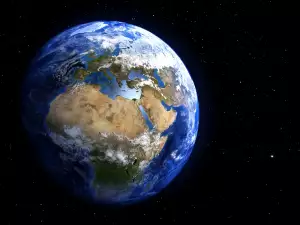248 mi (400 km) northeast from the capital of Laos - Vientiane, lies one of the most mysterious places on Earth. That is Xiangkhouang province - a picturesque valley covered from end to end with stone pitchers resembling gigantic jars.
The mysterious artifacts of the Valley of 1000 Pitchers are scattered over several hundred miles. They vary in height from 3.5 ft (1 m) to 10 ft (3 m) and are all crafted from stone that cannot be found anywhere in the surrounding areas. Analysis shows that the pitchers once had stone lids but over the years these were removed and broken, without any trace of them left today. The artifacts are covered in all sorts of markings, whose meaning researchers can only guess.
Only one of the pitchers has a carved human figure but it still remains a mystery. Scattered around these monolithic pitchers they've found human bones, other ancient artifacts and strange stone discs whose function remains just as mysterious as that of the pitchers themselves.
It's been found that the stone monoliths were built during the Iron Age (500 B.C. - 500 A.D.). Since then they've been shrouded in mystery and legends, without any clear idea as to who made them and why. Their history has turned into myth.
The mythical origins of the strange pitchers are mentioned in the legends of the peoples in the region, in which they are depicted as creations of a race of giants who supposedly inhabited the area. According to these legends, the giant king Hun Chung made each of his subjects make 1 giant pitcher and fill it with alcohol after a victory on the battlefield. After the giants left the valley they simply abandoned the pitchers and never returned for them.
The Valley of 1000 Pitchers first became the subject of archaeological study during the 30s of the 20th century by French explorer Madeleine Colani, who conducted the first scientific observations. It was found that the majority of them were made of sandstone but there are also ones of granite and other materials. A hypothesis was proposed that the artifacts were used for ancient burial ceremonies. Despite this this theory is still not fully accepted by the scientific community.
According to another theory the artifacts were used to store food and water, as well as to feed caravans that traveled through the area. A third theory states that the stone pitchers were used to collect rainwater since there are few sources of water in the region.
The majority of people who visit the Valley of 1000 Pitchers say it is magical, with a unique atmosphere. Unfortunately, it is not open to tourists today. Most of the stone pitchers were damaged during the 1970s during the so-called "Secret War" of the US that aimed to prevent the spread of communism to Indochina. The merciless bombings of the area destroyed hundreds of the containers, while the cluster bombs thrown over the valley, many of them still unexploded, make the Valley of 1000 Pitchers deadly to anyone bold enough to go see them.
